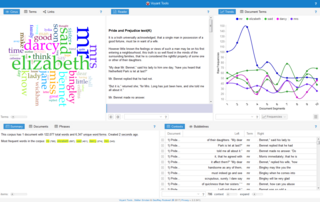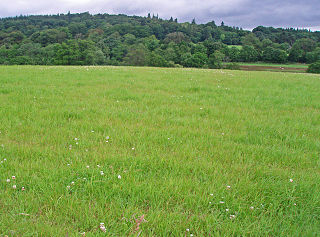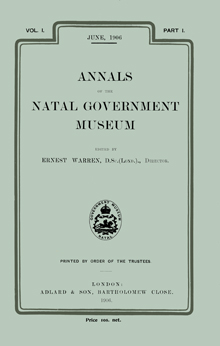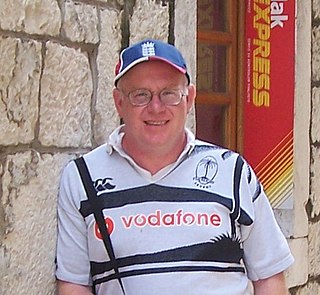A citation index is a kind of bibliographic index, an index of citations between publications, allowing the user to easily establish which later documents cite which earlier documents. A form of citation index is first found in 12th-century Hebrew religious literature. Legal citation indexes are found in the 18th century and were made popular by citators such as Shepard's Citations (1873). In 1961, Eugene Garfield's Institute for Scientific Information (ISI) introduced the first citation index for papers published in academic journals, first the Science Citation Index (SCI), and later the Social Sciences Citation Index (SSCI) and the Arts and Humanities Citation Index (AHCI). American Chemical Society converted its printed Chemical Abstract Service into internet-accessible SciFinder in 2008. The first automated citation indexing was done by CiteSeer in 1997 and was patented. Other sources for such data include Google Scholar, Microsoft Academic, Elsevier's Scopus, and the National Institutes of Health's iCite.
PANDORA, or Pandora, is a national web archive for the preservation of Australia's online publications. Established by the National Library of Australia in 1996, it has been built in collaboration with Australian state libraries and cultural collecting organisations, including the Australian Institute of Aboriginal and Torres Strait Islander Studies, the Australian War Memorial, and the National Film and Sound Archive. It is now one of three components of the Australian Web Archive.
The Arts and Humanities Research Council (AHRC), formerly Arts and Humanities Research Board (AHRB), is a British research council, established in 1998, supporting research and postgraduate study in the arts and humanities.

Digital humanities (DH) is an area of scholarly activity at the intersection of computing or digital technologies and the disciplines of the humanities. It includes the systematic use of digital resources in the humanities, as well as the analysis of their application. DH can be defined as new ways of doing scholarship that involve collaborative, transdisciplinary, and computationally engaged research, teaching, and publishing. It brings digital tools and methods to the study of the humanities with the recognition that the printed word is no longer the main medium for knowledge production and distribution.
The Humanities Advanced Technology and Information Institute (HATII) was a research and teaching institute at the University of Glasgow in Scotland. It was established in 1997 with Professor Seamus Ross as Founding Director until 2009. HATII led research in archival and library science and in information/knowledge management. Research strengths were in the areas of humanities computing, digitisation, digital curation and preservation, and archives and records management.

Project MUSE, a non-profit collaboration between libraries and publishers, is an online database of peer-reviewed academic journals and electronic books. Project MUSE contains digital humanities and social science content from over 250 university presses and scholarly societies around the world. It is an aggregator of digital versions of academic journals, all of which are free of digital rights management (DRM). It operates as a third-party acquisition service like EBSCO, JSTOR, OverDrive, and ProQuest.

Balbridie is the site of a Neolithic long house in Aberdeenshire, Scotland, situated on the south bank of the River Dee, east of Banchory. The site is one of the earliest known permanent Neolithic settlements in Scotland, dating from 3400 to 4000 BC. This is the largest Neolithic long house to be excavated in Britain. In a European context, Whittle has indicated the rarity of such large Neolithic timber houses, citing Balbridie, a hall in Cambridgeshire, and Fengate as a small set of such finds.
Vectors: Journal of Culture and Technology in a Dynamic Vernacular was a peer-reviewed online academic journal published by the USC School of Cinematic Arts. It was established in March 2005 and covers the digital humanities, publishing work that "cannot exist in print". Vectors is recognized as an experimental precursor to the digital humanities, producing and publishing a range of highly interactive works of multimedia scholarship. Comparing Vectors with more traditional digital humanities publications, Patrick Svensson notes that, "Vectors, on the other hand, is clearly invested in the digital as an expressive medium in an experimental and creative way". The journal's last issue was published in 2013.

African Invertebrates is a peer-reviewed open access scientific journal that covers the taxonomy, systematics, biogeography, ecology, conservation, and palaeontology of Afrotropical invertebrates, whether terrestrial, freshwater, or marine. It is published by Pensoft Publishers on behalf of the KwaZulu-Natal Museum and the editor-in-chief is David G. Herbert.
A digital library, also called an online library, an internet library, a digital repository, a library without walls, or a digital collection is an online database of digital objects that can include text, still images, audio, video, digital documents, or other digital media formats or a library accessible through the internet. Objects can consist of digitized content like print or photographs, as well as originally produced digital content like word processor files or social media posts. In addition to storing content, digital libraries provide means for organizing, searching, and retrieving the content contained in the collection. Digital libraries can vary immensely in size and scope, and can be maintained by individuals or organizations. The digital content may be stored locally, or accessed remotely via computer networks. These information retrieval systems are able to exchange information with each other through interoperability and sustainability.
Bryn Mawr Classical Review (BMCR) is an open access journal founded in 1990. It publishes reviews of current scholarly work in the field of classical studies including classical archaeology. This journal is the second oldest online humanities scholarly journal. It provides both online and print subscriptions at no charge. The journal is funded entirely by the sale of Bryn Mawr Commentaries. The journal receives many submissions from volunteers, and its editors maintain an online list of materials that need to be reviewed for those interested. The online version also offers access to Bryn Mawr's electronic resource review, which is made up of reviews of non-print classical scholarly writings. As of now, however, those reviews have not been indexed.
The Archaeology Data Service (ADS) is an open access digital archive for archaeological research outputs. It is located in The King's Manor, at the University of York. Originally intended to curate digital outputs from archaeological researchers based in the UK's Higher Education sector, the ADS also holds archive material created under the auspices of national and local government as well as in the commercial archaeology sector. The ADS carries out research, most of which focuses on resource discovery, cross-searching and interoperability with other relevant archives in the UK, Europe and the United States of America.
Alan George Vince was a British archaeologist who studied Saxon, medieval and early modern ceramics through the application of petrological, geological and archaeological techniques. He was also a teacher and a pioneer in the use of computers and the internet in archaeology.
Seamus Ross is a digital humanities and digital curation academic and researcher based in Canada.

David Charles De Roure PhD FBCS FIMA CITP is a Professor of e-Research at the University of Oxford, where he is responsible for Digital Humanities in The Oxford Research Centre in the Humanities (TORCH), and is a Turing Fellow at The Alan Turing Institute. He was Director of the Oxford e-Research Centre (OeRC) from 2012-17. From 2009 to 2013 he held the post of National Strategic Director for e-Social Science. and was subsequently a Strategic Advisor to the UK Economic and Social Research Council in the area of new and emerging forms of data and realtime analytics. He is a supernumerary Fellow of Wolfson College, Oxford. and Oxford Martin School Senior Alumni Fellow.

The Department of Archaeology at the University of York, England, is a department which provides undergraduate and postgraduate courses in archaeology and its sub-disciplines and conducts associated research. It was founded in 1978 and has grown from a small department based at Micklegate House to more than a hundred undergraduate students based at King's Manor and with scientific facilities at the BioArCh centre on the main campus.
Julian Daryl Richards is a British archaeologist and academic. He works at the University of York, and is co-director of the Archaeology Data Service (ADS), and Internet Archaeology. He is also the director of the Centre for Digital Heritage at the university, and contributed to the founding of The White Rose College of the Arts & Humanities. His work focuses on the archaeological applications of information technology. He has participated in excavations at Cottam, Cowlam, Burdale, Wharram Percy, and Heath Wood barrow cemetery.

Vincent Gaffney is a British archaeologist and the Anniversary Chair in Landscape Archaeology at the University of Bradford.

Lorna M. Hughes has been Professor in Digital Humanities at the University of Glasgow since 2015. From 2016 to 2019, she oversaw the redevelopment of the Information Studies subject area The re-launch was marked by an international symposium at the University of Glasgow in 2017.

Melissa Mhairi Terras is a leading international figure in the field of Digital Humanities. Since 2017, she has been Professor of Digital Cultural Heritage at the University of Edinburgh, and director of its Centre for Digital Scholarship. She previously taught at University College London, where she was Professor of Digital Humanities and served as director of its Centre for Digital Humanities from 2012 to 2017: she remains an honorary professor. She has a wide ranging academic background: she has an undergraduate degree in art history and English literature, then took a Master of Science (MSc) degree in computer science, before undertaking a Doctor of Philosophy (DPhil) degree at the University of Oxford in engineering.











